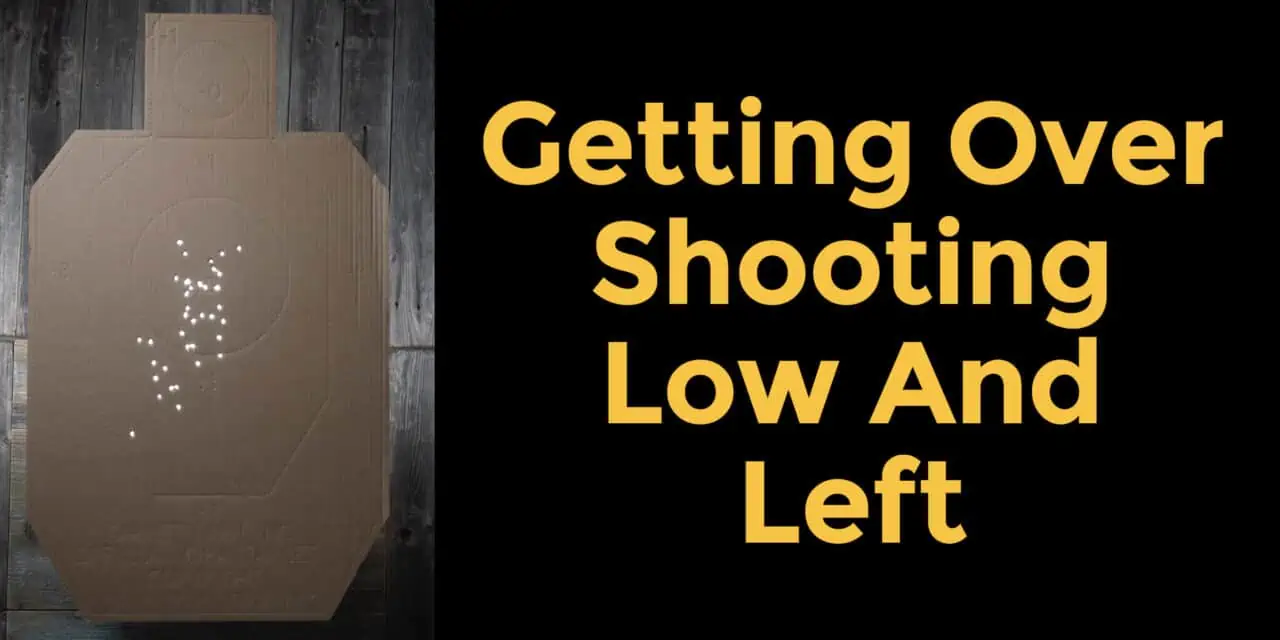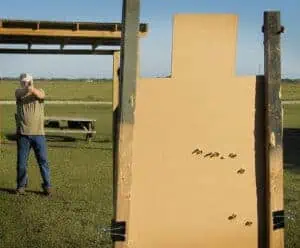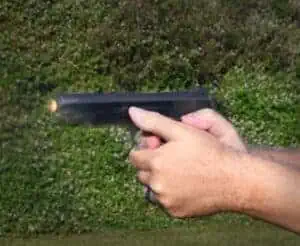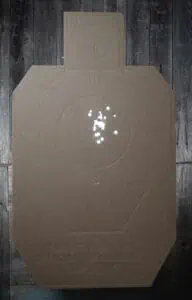Common Marksmanship Problems: Shooting Low And Left
One of the best things about the shooting sports, especially pistol shooting, is that we get immediate, visible feedback every time we send a round downrange. In an instant, we can tell if our stance, aim, grip and trigger control were up to the task of hitting the target, or whether we fell short. The targets, much to our chagrin, don’t lie. Correcting issues with our marksmanship, such as shooting low and left, is a process. The process isn’t difficult, but it does take time and effort. That’s the bad news. The good news is, it works. You can stop shooting low and left. I’m living proof of that, and I’ll tell you how I conquered this common marksmanship problem.
Let’s talk about the good news first. If you realize that you’re shooting low and left on your target, it means that your skill has progressed to where you are shooting discernable groups on the paper. This is a good thing, because that means you’re developing some consistency in your grip, stance, aiming and trigger control. Shooting consistent, repeatable groups is the foundation of improving your skill with a pistol. Shooting groups is important, even if those groups are not where you want them. Being able to shoot groups means you can achieve some level of performance on demand and gives you a starting point for improving your marksmanship.
Fixing Shooting Low and Left Requires Time And Some Work
Now, the bad news. You’re shooting groups with your pistol, but some of those groups are winding up off-target. There are reasons why you are shooting low and left. Once you understand those reasons, you can make some adjustments to your shooting, and with a little practice, get all your shots where they are supposed to be.
I should tell you this isn’t an academic exercise for me. I have had a problem with getting my groups on-target with a pistol ever since I started getting serious about my pistol marksmanship. It took consistent practice and some patient analysis of what I was doing as I pulled the trigger, but I eventually emerged victorious, and I moved on to correcting other issues with my pistol skills.
You Call It Trigger Jerk. I Call It Shooting Low and Left
Shooting low and left is known by a number of other names in the shooting community such as “trigger jerk” or “slapping the trigger.” These phrases make us believe that the solution to our problem lies (literally) in our hands. However, one of the first things I realized is just how involved our minds are involved in the process of curing this problem.
We are not made of stone. We are physically incapable of keeping a gun locked on-target without some measure of movement. The amount of movement can be reduced by properly gripping the pistol and our stance, but the sights will always move somewhat, no matter what we do. At some point in their movement, they’re going to cross our aiming point, and that’s when we think “Ah-HA! I have to pull the trigger right NOW!!!” What happens next is that our shots downwards, to the left of the target center. It’s not that we jerked the trigger, it’s that we were impatient and didn’t believe that the sights on our gun will ever settle down and stay on target.
The Sight Picture Isn’t A Sight Picture
Sights wobble. It’s a fact of life. We talk about “sight picture,” but what we really have is “sight video.” Understanding this and doing it while firing a pistol is a big part of getting over shooting low and left. However, it isn’t all in your mind, there is a physical element to it as well. After all, it is our finger on the trigger, not our brain, and how we move the trigger when we shoot affects the results on the paper.
It takes time for a pistol to fire. There is a fraction of a second of lag between the time when the motion of the trigger starts the firing process and the bullet leaves the barrel, on its way to the target. Activating the trigger is the final movement in this process, and so any movement to the gun that happens as you pull the trigger is going to affect where the gun is pointed as the bullet leaves the barrel.
Press Your Way Forward
This is why a smooth trigger press is an essential part of curing this habit. As my friend Jeff Street from Step By Step Gun Training says, a trigger is not a light switch that you quickly flick it on and off. Rather, it’s a dimmer switch that you dial up to where you want. Pulling the trigger quickly when you see your sights on-target results in a sharp, jarring motion that can move your gun right before the bullet leaves the barrel. This, in turn, results in a shot that lands down and to the left of where you were aiming.
There are other things you can do to help you solve the problem of shooting low and left. A strong grip on your pistol can minimize the wobble of the sights. A strong grip also reduces the amount of movement that happens when you pull the trigger sharply. Dry fire practice is probably the best thing you can do to get over shooting low and left. Watching how your sights move (or better still, don’t move) as you pull the trigger teaches your body what a good trigger press should look and feel like. Regular dry fire practice will install good technique, and good technique, when performed quickly, produces great results.
Practice First. Progress Later.
If you think that becoming a better pistol shot is a never-ending journey, you’re right, it is. Shooting a pistol is a perishable skill. It goes away without regular practice, and old bad habits soon start to reappear. Spotting the issue when it happens and keeping it in check with regular practice is the only really effective solution to solving this problem. There is no “miracle cure” to being a better shot, there is only good technique and regular practice. The end result of all the effort is worth it. Being a good shot is a rewarding feeling, and it’s a skill that just might save your life one day.





